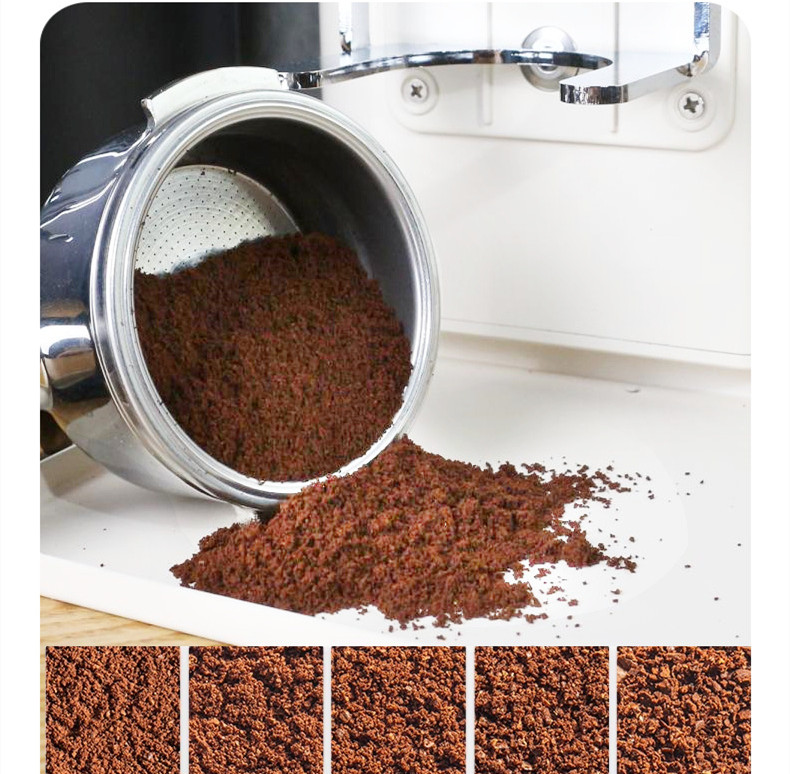The way coffee beans are heated in a roaster directly affects their flavor formation and quality stability. The main heating mechanisms can be classified into three types: conduction, convection, and radiation. The following is an analysis from the aspects of principle, action stage, and synergistic effect:
First, conductive heat transfer: Heat is transferred through direct contact
Principle
The coffee beans come into direct contact with the inner wall of the roaster drum, and the heat is conducted to the bean body through the high-temperature surface of the metal drum. Just as when frying a steak, the bottom of the pan transfers heat to the meat, the efficiency of heat conduction depends on the contact area, pressure and the thermal conductivity of the metal.
Stage of action
Dehydration period (0-8 minutes) : The moisture content of the bean body is high (about 10%-12%), and the evaporation of water absorbs a large amount of heat. At this time, conduction heating is the main method, and the surface temperature of the bean body rapidly rises to 120℃-150℃.
Before the first crack: The internal moisture of the bean decreases, the conduction efficiency improves, and the temperature of the bean core gradually approaches the surface temperature, providing energy for the subsequent Maillard Reaction.
Influencing factors
Drum speed: If the speed is too low, the beans will accumulate and the contact area will decrease. If the rotational speed is too high, the suspension time of the bean body will be too long and the heat conduction will be insufficient.
Bean body filling rate: If the filling rate is too high (such as exceeding 80% of the drum volume), it will restrict the bean body from rolling, leading to local overheating. If the filling rate is too low (below 50%), the heat utilization rate will decline.
Second, convective heating: Heat is driven by the circulation of hot air
Principle
The roaster uses a fan to blow hot air into the drum. The hot air undergoes convective heat exchange with the surface of the coffee beans, similar to how a hair dryer takes away moisture and heats the hair strands when drying it. The convective heating efficiency depends on wind speed, temperature and the surface roughness of the bean body.
Stage of action
Development period (8-12 minutes) : The surface moisture of the bean body basically evaporates, and convective heating becomes the dominant factor. Hot air rapidly raises the temperature of the bean body from 150℃ to 180℃-200℃, promoting the caramelization reaction and the release of flavor substances.
After the second roasting: Convective heating accelerates the vaporization of internal moisture in the beans, promoting their expansion and structural changes, thus creating the unique smoky aroma and rich flavor characteristic of deep roasting.
Influencing factors
Wind speed and air volume: If the wind speed is too low (such as <3m/s), it will cause uneven heating of the bean body. Excessively high wind speeds (such as >6m/s) may blow the beans apart, affecting their rolling stability.
Hot air temperature gradient: The temperature of the hot air inside the drum should be evenly distributed to avoid uneven baking caused by high temperatures at the front end (such as 220℃) and low temperatures at the back end (such as 180℃).
Third, radiation heating: Infrared rays penetrate and transfer energy
Principle
The heating elements of the roaster (such as resistance wires and gas flames) emit infrared rays that directly penetrate the skin of coffee beans and heat the internal tissues. Just as the surface and deep layers of the skin heat up simultaneously when sunlight shines on the human body, the efficiency of radiation heating depends on the wavelength, the thickness of the bean body and the water content.
Stage of action
Full-process penetration: Radiation heating runs through the entire baking process, especially when the moisture content of the beans is low (such as after cracking), infrared rays can penetrate deep into the bean core, promoting the uniformity of internal temperature.
Flavor substance stimulation: Radiation and heating accelerate the chemical reactions within the coffee beans, promoting the formation of volatile aromatic substances (such as pyrazines and furans), and enhancing the complexity and layering of coffee.
Influencing factors
Heating element layout: The heating elements should be evenly distributed around the drum to prevent excessive local radiation from causing the bean bodies to burn.
Bean thickness and density: Large-sized bean bodies (such as the native species of Ethiopia) take longer to absorb radiation energy, while small-sized bean bodies (such as the Colombian Kadula) heat up faster.
Fourth, the synergistic effect of the three heating methods
Phase dominance switching
Dehydration period: Conduction heating is the main factor (accounting for 60%-70%), with convection and radiation as supplementary.
Development stage: Convective heating dominates (accounting for 50%-60%), with conduction and radiation working in coordination.
Deep roasting stage: The proportion of radiation heating is increased to 40%-50%, promoting the uniformity within the bean body.
Flavor regulation logic
City Roast: Enhances conductive heating, shortens convection time, and retains more fruit acids and floral aromas.
Full City Roast: Balancing three heating methods, highlighting the caramel sweetness and nutty flavor.
French Roast: Prolongs the radiation exposure time to enhance the smoky sensation and chocolate flavor.
Common Problems and Solutions
Uneven roasting with sharp spikes: The imbalance between conduction and convection causes local overheating on the surface of the beans. The speed of the drum or the wind speed needs to be adjusted.
Undercooked bean curd core: Insufficient radiation heating causes internal temperature lag. It is necessary to increase the power of the heating element or extend the baking time.
Monotonous flavor: Insufficient coordination among the three heating methods, and the baking curve needs to be optimized (such as adjusting the ratio of the dehydration period to the development period).
Fifth, the direction of technical optimization
Dynamic heat flow control
The surface and internal temperatures of the beans are monitored in real time through sensors, and the proportions of conduction (drum speed), convection (wind speed and temperature), and radiation (heating element power) are dynamically adjusted to achieve precise temperature control.
Micro-environment simulation
Micro-porous structures or flow guide grooves are designed on the inner wall of the drum to enhance the penetration of hot air and the uniformity of the bean body’s rolling. A honeycomb structure similar to this improves the heat exchange efficiency.
Infrared spectrum regulation
Infrared heating elements with specific wavelengths (such as 3-5μm) are adopted to target the absorption peaks of moisture and organic matter inside coffee beans, thereby enhancing the efficiency of radiation heating.
Summary
The heating method of coffee beans in the roaster is a dynamic and coordinated process of conduction, convection and radiation, and the proportion of the three needs to be adjusted according to the roasting stage and the target flavor. For instance, light roasting focuses on conduction and radiation to retain acidity, while dark roasting intensifies convection and radiation to enhance thickness. Roasters need to precisely control the heating method through equipment parameters (such as rotational speed, wind speed, and temperature) and process optimization (such as the design of roasting curves), ultimately resulting in coffee beans with balanced flavors and stable quality.


